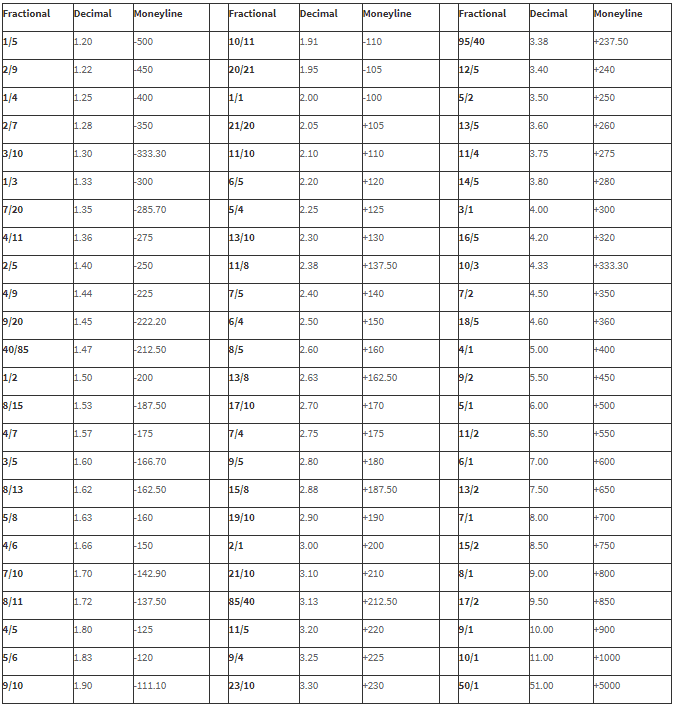American Betting Odds Explained

American odds represent perfectly the possibilities in American sports A minus sign (-) is used for the favorites. It indicates the amount of money you have to wager to. American odds start with either a + or a – sign. The former means that is what you would win (profit) from a $100 stake, whereas the latter shows how much you would have to stake to win $100. So, in our examples, 10/11 is the same as 1.91 is the same as -110 (so betting $110 will give a profit of $100), whilst 1/6 is the same as 1.17 is the same as -600.
Betting odds come in a variety of different formats and the one most commonly used varies according to what part of the world you happen to be in. Here we explain the difference between fractional betting odds, mainly used in the UK, decimal, used in Europe and Australia, and American odds, used… well, have a guess.
Fractional Betting Odds
Until betting exchanges started using decimal odds fractional odds were the only type ever seen and used in the UK. For example, in a snooker match where both players are evenly fancied the odds would be 10/11 on each player. This means that for each £11 you bet you would get £10 winnings plus your stake of £11 for a total return of £21. Where the profit is less than your stake (in simple terms, the number on the left is smaller than the one on the right) this is “odds-on” and can be expressed as “10 to 11” or “11 to 10 on” – both mean the same thing.
If one snooker player is a big favourite they may be priced at 1/6 (also called 6/1 on), meaning a bet of £6 makes £1 profit, whilst the outsider may be 4/1, meaning a bet of £1 makes a profit of £4 plus your stake back for a return of £5.
Decimal Betting Odds
With decimal odds the prices are quoted to include your stake back, so the number given is your total return, not the profit and is expressed as a decimal, not a fraction. This is calculated by turning the fractional odds to decimal and adding on one (the one being your stake). So 10/11 is 10 divided by 11 plus one – or 1.909. Thus, if you bet £1, you get £1.91 back.
For the big favourite at 1/6, your decimal odds are: one, divided by six, then plus one, so 1.17 (the exact price can vary very slightly depending on if the bookie rounds the price up or down and how many decimal places they use). Similarly for the outsider the price would be four divided by one, plus one – so 5.00. Converting fractional to decimal when the original is “to one” – e.g. 4/1 or 8/1 or 100/1 – is very easy because you just add one on. So 100/1 is 101 in decimal odds.
American Betting Odds Explained

American Betting Odds
How Does Betting Odds Work
American odds start with either a + or a – sign. The former means that is what you would win (profit) from a $100 stake, whereas the latter shows how much you would have to stake to win $100.
So, in our examples, 10/11 is the same as 1.91 is the same as -110 (so betting $110 will give a profit of $100), whilst 1/6 is the same as 1.17 is the same as -600. Our snooker outsider is 4/1, thus 5.00 in decimal and +400 in American odds.
American Betting Odds Explained For Boxing
The fractional odds of 1/1 are called “evens” in the UK, often “even money” in the US and are expressed as +100 in American odds (and 2.00 in decimal).